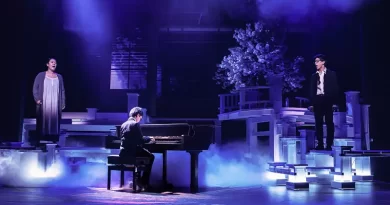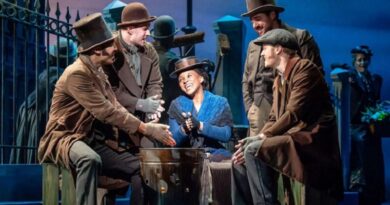“El nost Milan”, Carcano Theatre
Maggie Rose in Lombardy
18th December 2022
Milan’s Carcano Theatre (founded 1803), has, for the first time, two women artistic directors, Lella Costa and Serena Sinigaglia, who since their appointment in 2020 have replaced a rather traditional repertoire with new writing, adventurous reinterpretations of classical plays, and their own in-house productions.

Photo courtesy of El Teatro Carcano.
In December Costa and Sinigaglia turned the spotlight on Milan and the increasing poverty in the city with El nost Milan, la povera gente e sciori (Our Milan. The Poor and the Rich). The play is Sinigaglia’s re-appropriation of Carlo Bertolazzi’s genre-setting work (1895) which provoked the anger of some late-nineteenth- century critics who claimed that its portrayal of the poor of Milan was too crude. Audiences thought differently and flocked to see it.
In 1955 it was revived by Giorgio Strehler, director of Milan’s Piccolo Teatro in the same season as Brecht’s The Threepenny Opera at a time when Strehler felt an urgent need to explore the rapid and often preoccupying changes, taking place in Milan in the aftermath of World War Two.
In a programme note, Sinigaglia describes her intention to create: “A game of mirrors in which Milanese citizens onstage tell Milan’s story for the Milanese citizens in the audience.” To achieve this goal, for the past year the Carcano and Atir (a company whose base is in the suburbs of Milan) have organized several workshops in various parts of the city, thereby involving people from strikingly different backgrounds and ethnic groups.
The participants have explored where and who the poor are in present-day Milan. These workshops are scheduled to continue for the next three years in tandem with the development of the final two parts of what will be a trilogy involving 150 citizen-actors as well as cultural associations and charities. As Sinigaglia said: “It will be the citizens themselves who tell the story of Milan, both the city at the end of the nineteenth-century and the one today, uncovering the places where the poor and rich live as well as the linguistic origins.”

Photo courtesy of El Teatro Carcano.
In a packed Carcano theatre, I saw the first part of this contemporary El nost Milan which equated to a virtual tour of the city, thanks to a sequence of short fast-paced scenes set in different locations. Our guide was Lella Costa, who, besides being artistic director, is also a much respected actor. We entered a community centre run by the Catholic church where the middle-class volunteers were coping, and sometimes failing to cope, in their attempt to supply an increasing number of migrants with food, clothing and accommodation.
Then on to the immigration office where the newly arrived face long queues and sometimes insurmountable bureaucratic hurdles in their bid to obtain a residence permit. As one of the migrants said: “It’s a gamble, like playing dice”. We were also introduced to a group of riders from around the world who since lockdown have flooded Milan’s streets on their bikes as they deliver ready-made meals, a job for which they are paid poorly amid abysmal working conditions.
The performances of these mainly non-professional actors, who crowded the stage, was sometimes far from perfect but their enthusiasm and vivacity made you care about the stories of hardship and want being depicted.
When Bertolazzi wrote El nost Milan, Milanese was still a living language, instead today it is almost forgotten. Serena Sinigaglia explains why she decided to try to bring it to life again: “Milanese carries you inside a specific identity, gives you the bodies and mood of the city.” The ecstatic response of audience members, who did not limit their applause to the final curtain-call but clapped and commented enthusiastically during the performance, suggested to me that this citizens’ theatre, which mirrors Milan’s multi-ethnic community, has grabbed the imagination of many people.









